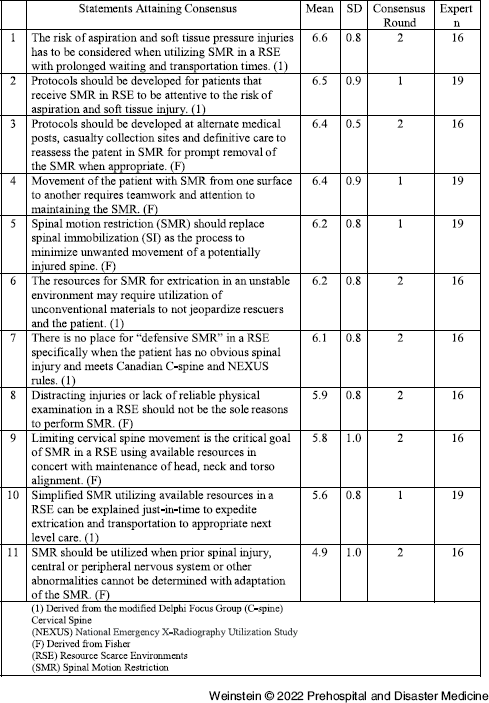No CrossRef data available.
Published online by Cambridge University Press: 22 November 2022
Emerging evidence is guiding changes in prehospital management of potential spinal injuries. The majority of settings related to current recommendations are in resource-rich environments. Whereas there is a lack of guidance on the provision of spinal motion restriction (SMR) in resource-scarce environments (RSE).
What is appropriate SMR in RSE?
The first round of this Modified Delphi (mD) study was a structured focus group. The result of the focus group discussion of open-ended questions produced ten statements that were added to ten statements derived from Fischer (2018) to create the 20 mD statements presented to the experts.
Experts rated their agreement with each statement on a scale from one to seven. Consensus amongst experts was defined as SD≤1.0. Statements that were in agreement reaching consensus were included in the final report. Those not reaching consensus advanced to the next mD round.
For these subsequent rounds, experts were shown the mean response and their own response for each of the remaining statements and asked to reconsider their rating. As above, those that did not reach consensus advanced to the next round until consensus was reached for each statement.
Twenty-two experts completed the first mD round, 19 completed the second mD round, and 16 completed the third mD round. Eleven statements reached consensus (Table 1). Nine statements did not reach consensus (Table 2).
Experts reached consensus offering 11 statements to be incorporated into the creation of SMR clinical guidelines in RSE.
Tables and Figures (optional)
Table 1.

Table 2.
